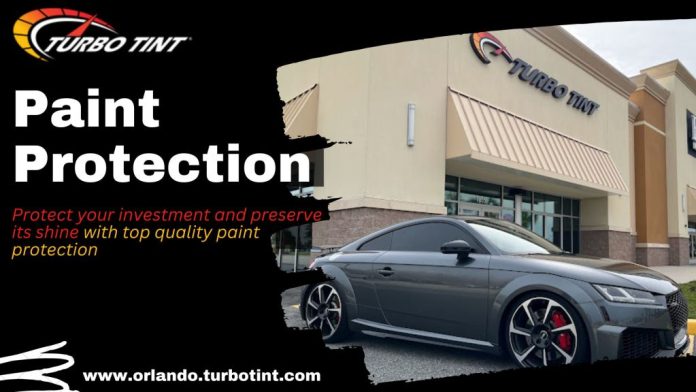In the world of automotive care, paint protection film (PPF) has gained significant popularity for its ability to safeguard vehicle paint surfaces from scratches, rock chips, and other damage. However, like any other product, PPF is not immune to myths and misconceptions. In this blog, we will debunk the top 7 paint protection film myths in 2023, providing you with accurate information and helping you make an informed decision about the benefits and limitations of PPF.
Table of Contents
Myth 1: Paint Protection Film is Too Expensive
One common misconception about PPF is that it is excessively expensive. While it’s true that paint protection film installation comes with a higher price tag compared to other protective measures, it offers long-term value and cost savings. The cost of PPF installation depends on factors such as size, prep work, type of product, and the expertise of the installer. Choosing a reputable and experienced installer ensures proper surface preparation and exceptional results, reducing the risk of damage to your vehicle. Moreover, investing in high-quality PPF can save you from expensive repainting in case of severe damage.
Myth 2: PPF Affects Car’s Resale Value
Contrary to popular belief, high-quality paint protection film can actually enhance your car’s resale value. By maintaining the original factory finish and protecting it from road debris and environmental damage, PPF preserves the appearance of your vehicle over time. When backed by a documented warranty and transferable to the new owner, PPF adds an extra layer of reassurance, leading to increased resale value. Proper care and use of recommended automotive care products can further extend the life of the PPF and enhance the vehicle’s visual appeal.
Myth 3: Paint Protection Film Can Be Applied Anywhere on the Vehicle
While paint protection film can be applied to various surfaces, its effectiveness may vary depending on the material. PPF adhesive is designed to bond with automotive paint and fill minor imperfections. However, it does not adhere well to glass. For carbon fiber finishes, vinyl wraps, and other materials, it’s recommended to use a high-quality nano ceramic coating designed specifically for those surfaces.
Myth 4: Paint Protection Film is Bulletproof
Although paint protection film is highly durable and can deflect small rocks and gravel, it is not bulletproof. While it offers excellent protection against most common road hazards, extremely sharp and forceful impacts can still cause damage to the painted surface. For added protection, many consumers opt for a combination of partial PPF installation and ceramic coating on high-strike areas of the vehicle.
Myth 5: PPF Always Peels Up on Edges
The quality of PPF installation plays a crucial role in preventing peeling on edges. With advancements in technology and proper installation techniques, reputable installers can provide a seamless and long-lasting finish. However, it’s important to choose a certified installer with adequate training and experience to ensure a high-quality installation. Dust contamination during installation should also be minimized to prevent peeling and maintain the film’s longevity.
Myth 6: All PPF is 100% Transparent
While most paint protection films offer a gloss finish that enhances the depth and shine of the protected surface, they may not be suitable for vehicles with matte finishes. However, there are specialized ceramic-coated PPF options available that provide superior gloss and satin finishes, allowing you to achieve the desired look while still benefiting from the protective properties of PPF.
Myth 7: Vinyl is the Same as Paint Protection Film
Vinyl wraps and paint protection film are distinct products with different purposes. Vinyl wraps are primarily used for aesthetic purposes, such as creating custom designs or advertising. They are thinner and less durable compared to paint protection film. Vinyl wraps are not designed to provide the same level of protection against scratches, rock chips, and other forms of damage as PPF. On the other hand, PPF is specifically engineered to shield your vehicle’s paint surface from daily wear and tear, maintaining its original condition for longer periods.
Conclusion:
Debunking these top 7 paint protection film myths in 2023 provides clarity and accurate information about the benefits and limitations of PPF. By dispelling these misconceptions, you can make an informed decision about the value and advantages of investing in paint protection film for your vehicle.
Remember, while paint protection film may come with a higher upfront cost, it offers long-term value by preserving your vehicle’s appearance and potentially increasing its resale value. Choosing a reputable installer is crucial to ensure proper installation and optimal performance of the PPF. Additionally, understanding the limitations of PPF, such as its inability to adhere well to glass or provide bulletproof protection, will help you set realistic expectations.
Ultimately, paint protection film remains an excellent choice for safeguarding your vehicle’s paint surface, extending its lifespan, and reducing the risk of damage. Stay informed, consult with professionals, and make the best decision to keep your vehicle looking its best for years to come.
Also Read: What Happens If I’m A Passenger In A Borrowed Car Accident?




![Unblocked Games 66 at School [January 2020 – Updated] unblocked games 66 at school](https://www.virteract.com/wp-content/uploads/2017/03/unblocked-games-66-at-school-100x70.jpg)

